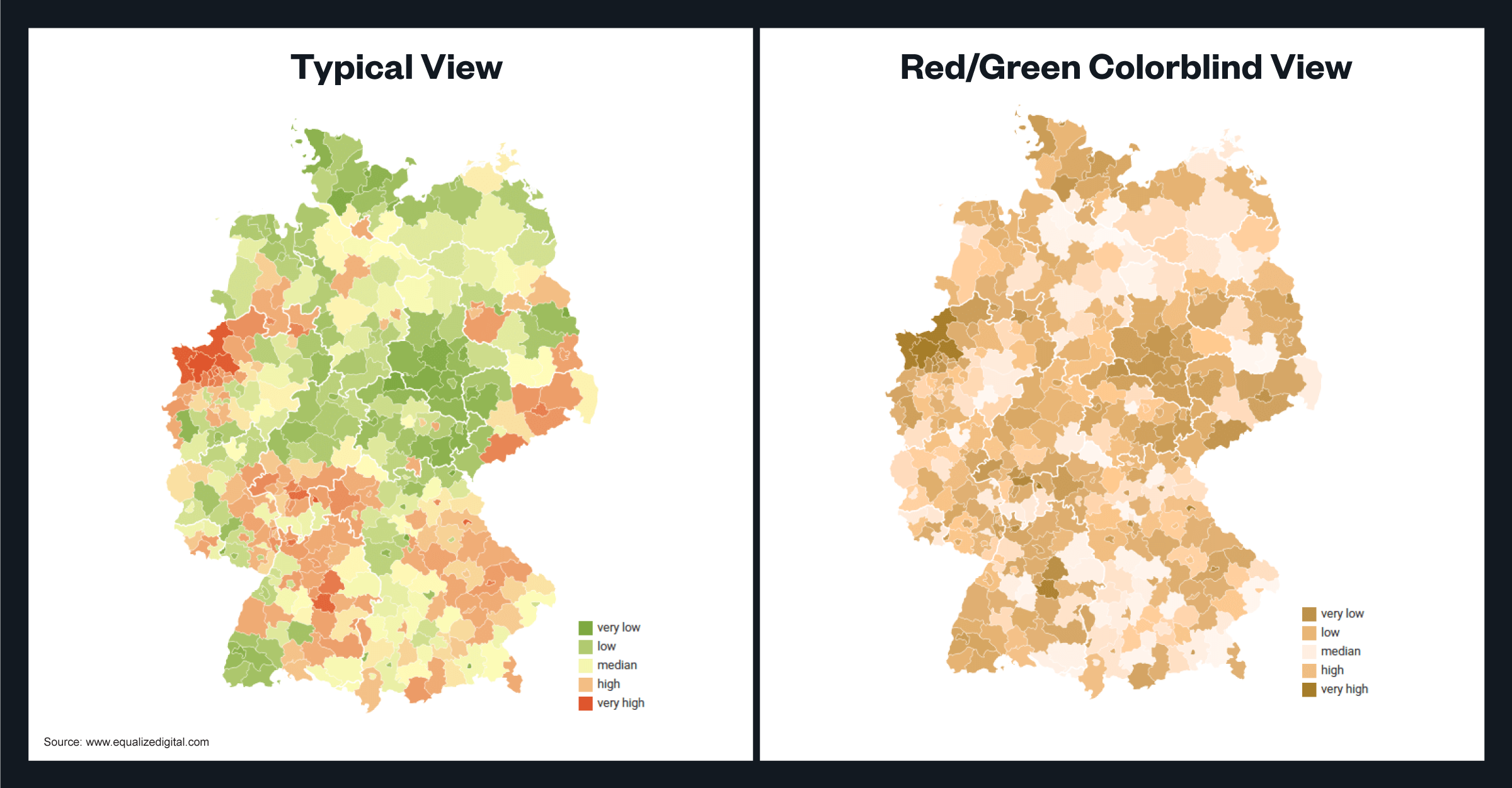Enhancing brand trust through site accessibility
Across the world, a full 16% of the population lives with a disability.¹ Yet, a staggering 96% of the world’s top one million websites don’t offer adequately accessible or usable experiences—failing to meet 2 A/AA guidelines established under the WCAG (Web Content Accessibility Guidelines).²
Site Accessibility Statistic
Think about that. On one hand, you could see this as a huge, missed opportunity. But it’s much more than that. What does it say about your brand when your website doesn’t accommodate a large swath of the global population? The repercussions go beyond the 16% of people who may not be able to access your site. For example, how often do you encounter a chart or data visualization that relies solely on color to tell its story when there are 300 million people worldwide who have color blindness?³

It erodes perception and trust with other potential customers, employees, students, investors, and audiences who put a premium value on inclusivity. On the flip side, when your site is accommodating to all users, it becomes a physical manifestation of your commitment to inclusivity.
One of our clients—a leading quantitative investment management firm—came to us with this very challenge. In the decade that we’ve been working with them, we already knew how deep their commitment was to fostering an inclusive work environment. Now, we needed to extend that to their site. After vetting a list of top accessibility vendors, we partnered with Allyant, a true industry leader in accessible solutions. Rather than relying solely on software or plug-ins, Allyant conducts live user testing with real people who have disabilities or impairments. They audited and analyzed our client’s site and provided a detailed report on how to enhance its usability. Our role was to maintain the brand integrity and implement custom design and development solutions. We made changes like enhancing contrast for better legibility and adding new features that made it easy for as many people as possible to consume content and navigate the site.

Today, our client has one of the few top sites that register at a WCAG 2.1 aa level. We know the challenges that face the other 96%² as they continue to strive to make their content and experiences as usable as possible. It’s important to start now and find a partner who can help you identify and resolve issues.
Let’s sum up three key takeaways on accessibility:
- It is a promise to your customers: Brands often pledge inclusivity in their hiring and in-person experiences, but it’s crucial not to overlook digital experiences. When your website adheres to evolving usability guidelines, it’s a physical manifestation of your commitment to diversity and inclusion.
- It helps you reach a larger audience: By ensuring your site is as usable as possible, you’re not only serving all users better, but you’re opening doors to previously underserved audiences. A bonus benefit is that it can actually help with search engine optimization. Features like alt text for images and semantic HTML tags don’t just aid visually impaired users, they help search engines navigate your site more smoothly as well. Search engines promote sites with positive user experiences, and WCAG compliance contributes to that.
- It demands a foundational approach: It’s tempting to use widgets or off-the-shelf plugins as quick fixes after the fact. Most web accessibility practitioners, however, consider this approach ineffective.² For our client, we prioritized accessibility at the code level. Yes, it took a little extra time, but it allows us to make accurate alterations and iterations as accessibility guidelines will inevitably continue to evolve.
Ultimately, our partnership with our client helped them deliver on their promise of equity and inclusivity to their users, investors, and employees. They’ve expanded their reach to a wider audience and established protocols for ongoing usability. With our deep understanding of their brand, we created unique solutions that are not only highly usable but also uphold the design and development standards we’ve worked hard to establish. We continue to build and evolve their site every day, ensuring that our approach is foundational and future-proof.
And for the rest of our clients, we are continuing to emphasize and prioritize accessibility—helping them uphold their promises of inclusivity and create digital experiences where usability and design go hand in hand.


